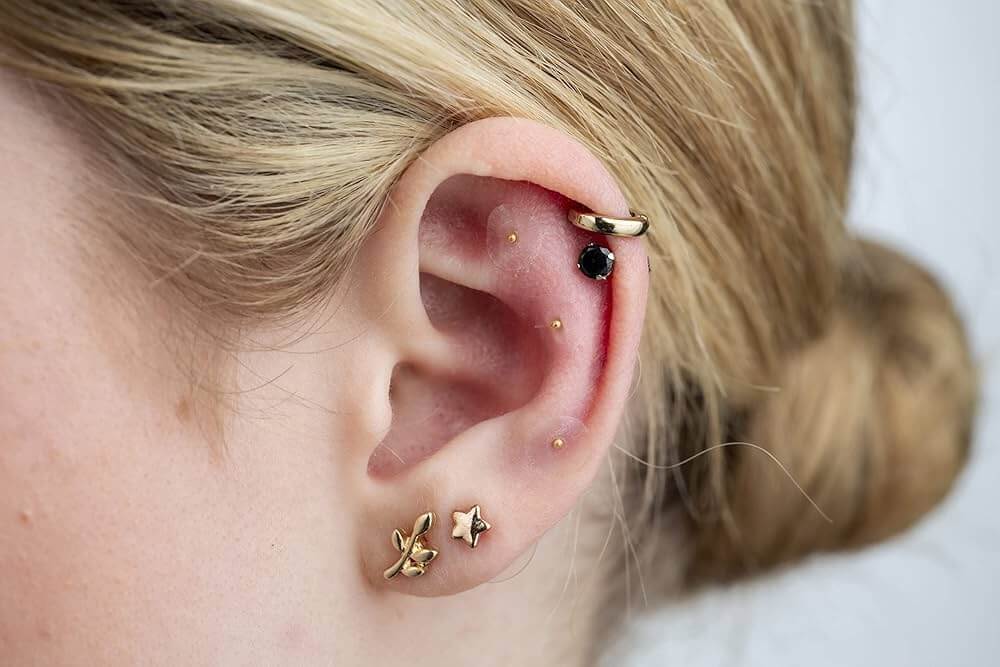- Thriving Guide
- Posts
- Do Ear Seeds Actually Work? Here’s What to Know
Do Ear Seeds Actually Work? Here’s What to Know
This acupressure-based trend promises stress relief, better sleep, and more but does the science support the hype?

Touted by wellness influencers and integrative health professionals alike, ear seeds are popping up everywhere from acupuncture clinics to social media feeds. These tiny pressure-point stickers are part of a therapy known as auriculotherapy (or ear acupuncture), and they promise to help with everything from anxiety and insomnia to pain and even addiction recovery.
But how effective are they really? And can pressing a tiny bead on your ear truly influence how your entire body feels?
Here’s what you need to know about ear seeds, what they’re used for, and whether they’re worth trying.
What Are Ear Seeds?
Ear seeds are small beads traditionally made from Vaccaria plant seeds, but now also available in metal, ceramic, or stainless steel that are placed on specific points on the outer ear to stimulate nerve endings. The idea is that your entire body is mapped onto your ear (similar to reflexology), and by applying pressure to certain points, you may relieve symptoms elsewhere.
They are often used in complementary medicine, either alongside acupuncture, massage therapy, or conventional treatments, and are held in place with small adhesive stickers.
Unlike acupuncture needles, ear seeds are non-invasive, painless, and can stay on for several days at a time.
What Are Ear Seeds Used For?
Ear seeds are typically used as part of a holistic approach to managing symptoms like:
Chronic pain (including low back pain)
Anxiety and stress
Insomnia
Depression
Smoking cessation
Addiction support
Weight management
Menstrual pain
Digestive discomfort
Fatigue
Trauma recovery
Some emerging studies have shown promising results, especially for pain management and stress relief, but it’s important to note: most research involves small sample sizes or uses ear seeds alongside other therapies. That makes it difficult to measure exactly how effective they are on their own.
How Ear Seeds Compare to Traditional Acupuncture
Ear seeds are based on the same principles as ear acupuncture (auriculotherapy), but with a few key differences:
Ear Seeds | Traditional Acupuncture |
|---|---|
Non-invasive | Uses needles |
Can be worn for days | Single-session treatment |
Can be self-applied | Requires licensed acupuncturist |
Based on external ear mapping | Based on full-body energy meridians |
They’re often viewed as a gentle, beginner-friendly alternative to acupuncture especially for people who dislike needles or want a DIY approach.
How to Use Ear Seeds Safely
Because the outer ear contains over 120 pressure points, it’s essential to know where to place ear seeds to target your specific symptoms.
Step-by-step application:
Clean the ear with rubbing alcohol and dry thoroughly
Identify the correct acupoints with the help of a licensed acupuncturist or practitioner
Use tweezers to place the seeds adhesive side down on the correct points (never inside the ear canal)
Press the seed gently in a circular motion 2–3 times per day to activate it
Remove seeds after 3–5 days, or if they begin to fall off
You can reapply fresh ear seeds after giving your skin a break of at least 8 hours.
Tip: Many practitioners use a probe or electric detector to find the most tender points this is where the seed will likely be most effective.
Do Ear Seeds Really Work?
Some studies suggest that auriculotherapy can influence:
Endorphin release (the body’s natural pain relievers)
Vagal nerve stimulation, which regulates relaxation and digestion
Hormonal balance, including cortisol and melatonin
But more rigorous, large-scale trials are needed before ear seeds can be recommended as a stand-alone treatment. They may help amplify results when used alongside evidence-based therapies like cognitive behavioral therapy, medication, physical therapy, or acupuncture.
In short: They might work but they’re not magic.
Are There Any Risks?
Most people tolerate ear seeds well, but there are a few things to keep in mind:
Common side effects:
Skin irritation or tenderness
Headache
Nausea or dizziness
Use caution if:
You’re pregnant (some points may trigger contractions)
You have skin wounds or infections on the ear
You’re allergic to adhesives or latex (choose hypoallergenic options)
You develop new or unexplained pain see a medical provider
Final Thoughts
Ear seeds offer a low-risk, low-cost way to explore the potential benefits of auriculotherapy especially if you’re looking to complement other health practices. While the research is still catching up, many people report improved stress levels, sleep, and pain relief.
For best results, consult with a licensed acupuncturist before applying ear seeds on your own. And remember ear seeds should be used as a supportive therapy, not a replacement for proper medical care.
Share this article or subscribe to our newsletter for more insights into holistic wellness.